Overviews of Collaborative Graduate program in Design, Kyoto University
- [2]-1 Toru Ishida, ProfessorPresentation slides
-

Toru Ishida has been a professor of Kyoto University since 1993. His academic paths include visiting scientist/professor positions at Department of Computer Science, Columbia University, Institut fuer Informatik, Technische Universitaet Muenchen, Le Laboratoired'Informatique de Paris 6, Pierre et Marie Curie, Institute for Advanced Computer Studies, University of Maryland, Shanghai Jiao Tong University, and Computer Science and Technology Department, Tsinghua University. He is also a fellow of IEEE, IPSJ, and IEICE. He is a Program Coordinator of Collaborative Graduate Program in Design.
His research interest lies with autonomous agents and multiagent systems, and he has been working on this theme for more than twenty years. He is a co-founder of MACC/JAWS (Japanese), PRIMA (Asia/Pacific) and ICMAS/AAMAS (International), conferences on autonomous agents and multiagent systems. He served as a program co-chair of the second ICMAS, a chair of the first PRIMA, and a general co-chair of the first AAMAS. He was also an editor-in-chief of Journal on Web Semantics (Elsevier) and an associate editor of IEEE PAMI, and Journal on Autonomous Agents and Multi-Agent Systems (Springer). In 2006, he began the Language Grid project to develop a language service infrastructure on the Internet.
- [2]-2 Tetsuo Sawaragi, ProfessorPresentation slides
-
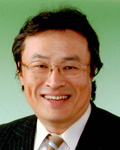
Tetsuo Sawaragi was born in 1957 and is a professor in the Dept. of Mechanical Engineering and Science in Kyoto University's Graduate School of Engineering. In addition to his professorship, he holds the concurrent posts of deputy director for research and international affairs and deputy director general of the Organization for the Promotion of International Relations (OPIR). Sawaragi received his B.S., M.S. and Ph.D. degrees in Systems Engineering from Kyoto University in 1981, 1983 and 1988, respectively. From 1991 to 1992, he was a visiting scholar in the Dept. of Engineering-Economic Systems of Stanford University.
He was a project leader of the government sponsored 21st Century COE Program “Center of Excellence for Research and Education on Complex Functional Mechanical Systems” of Kyoto University. He is currently a member of the Central Education Council (CYUKYOSHIN) of MEXT. He was a principal investigator of the Grant-in-Aid Creative Scientific Research 2007-2012 (19GS0208) on "Design Theory for Dynamical Systems with Semiosis" that was funded by MEXT. He has been engaged in the researches on Systems Engineering, Cognitive Science and Artificial Intelligence, particularly in the development of human-machine collaborative systems. He was a chair of IEEE SMC Japan Chapter, a president of Human Interface Society, and is currently taking a role of IFAC Vice-chair of TC on Human-Machine Systems from 2011.
- [2]-3 Teruyuki Monnai, ProfessorPresentation slides
-
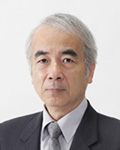
Teruyuki Monnai is a professor in the Department of Architecture and Architectural Engineering in Kyoto University's Graduate School of Engineering. He received his B.S. from Kyoto University in 1973, M.S. and Ph.D. degrees in Graduate School of Engineering from the University of Tokyo in 1975, and 1997. His doctoral dissertation on Semiotic Study of Townscape was highly appreciated and won the Prize of Architectural Institute of Japan in 1998.
He was a Research Associate of Institute of Industrial Science in the University of Tokyo from 1977 to 1989, an Associate Professor and a Professor at School of Science and Technology in Waseda University from 1989 to 2004. Since 2004 he has been a Professor of Kyoto University.
His research topics are as follows; Semiotic Study on the Design of Architectural and urban Space, Design Methodology, Study on behavior and Cognition in Architecture and Urban Environment, and System Theory on Design and Evaluation of Human Environment. He has been exploring human-environment relations and their design methods from the semiotic viewpoint for a long time. Now he engages in various design practices such as architectural design, townscape design, and community design in urban areas for sustainable societies.
He is a member of Architectural Institute of Japan, the City Planning Institute of Japan, Environmental Design Research Association, and International Association for Semiotic Studies. Also he was a core member of the Design Engineering Section of the National Committee for the Artifact Design and Production, Science Council of Japan, and a research field leader of urban governance in the government sponsored Kyoto University Global COE program on “Human Security Engineering for Asian Megacities”.
- [2]-4 Hiroyuki Matsui, ProfessorPresentation slides
-
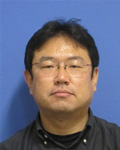
Hiroyuki Matsui received the B.S. from Yokohama City University Department of Humanities and Sciences, withdrew from the doctor's course of Interdisciplinary Graduate School of Science and Engineering, Tokyo Institute of Technology, after completion required credits. Ph. D.(Engineering) in 1998. He is currently a professor of the Graduate School of Management at Kyoto University.
He has researched about various fields relevant to the ICT support for realizing citizens' participation in municipal affairs in the planning theory. His current interests include gaming/multiagent simulation, and service science. He is a key member of U-Mart Project which it is in one of the artificial market research projects of the top in Japan. He is and has been a regular reviewer for several journals and conferences, and has served in program committees of many conferences, such as the International Simulation And Gaming Association (ISAGA), the World Congress on Social Simulation (WCSS) and others.
- [2]-5 Satoru Saito, Associate ProfessorPresentation slides
-
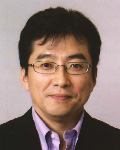
After he completed a PhD course in Educational Psychology at Graduate School of Education, Kyoto University, Satoru Saito joined Research Center for School Education, Naruto University of Education as an Assistant Professor in 1993. Then he moved to Department of Psychology, Osaka University of Education in 1995. From April 2002, he has been an Associate Professor of Cognitive Psychology at Graduate School of Education, Kyoto University.
His research examines the cognitive functions that underpin human flexibility by exploring the nature and organization of human memory – this is an empirical approach, which he calls “Memory Science.” Specifically, his group explores mechanisms of working memory and semantic memory and their roles in complex cognitive activities, such as, task switching, mind reading, action control, embodied cognition, retention of serial order, language processing, feature binding, and prospective memory by using a variety of techniques in experimental psychology, e.g., dual-task methodology, error-induction technique (in language processing and action), individual differences analyses, chronometric measurements, and an eye-tracking technique.
Overviews of the Well-Known Design Institutions
- [3]-1 Martin Bechthold, Professor
-

Bechthold is co-director of the Master in Design Studies Program and director of the GSD‘s Technology Platform. He teaches courses in design robotics and material systems, building structures, as well as lifecycle design. Recent courses include CeramicsLab, the TRACES option studio, Analysis and Design of Building Structures I and II, as well as Computer-Aided Design and Manufacturing (Cad/Cam).
Bechthold received a Diplom-Ingenieur degree in architecture from the Rheinisch-Westfalische Technische Hochschule in Aachen, Germany, and a Doctor of Design Degree from the Graduate School of Design at Harvard University. He is a registered architect in Germany and has practiced in London, Paris, and Hamburg. During this period he was associated with firms such as Skidmore, Owings & Merrill, Santiago Calatrava and von Gerkan, Marg & Partner.
Bechthold's research broadly looks at material and fabrication technology as a catalyst of innovation for design practice. In 2010 he founded the GSD's Design Robotics Group (DRG), a group of faculty, research associates and students that pursues sponsored and other research projects. DRG's current research focuses on integrating robotic technology into fabrication and construction processes, developing advanced material systems in collaboration with industry partners and the Wyss Center for Biologically Inspired Engineering, and understanding problems of lifecycle design in (building) products. Bechthold is co-author of “Structures” and “Computer-Aided Design and Manufacturing” as well as the author of “Innovative Surface Structures”.
- [3]-1 Mark Mulligan, Professor
-

Mark Mulligan is Adjunct Associate Professor in Architecture at Harvard University Graduate School of Design (GSD), where he also serves as Director of the Master in Architecture Degree Program. He is a registered architect with a practice in Cambridge, Massachusetts. The work of his firm (Mark Mulligan Architect, www.mm-architect.com) has focused on residential design in a variety of different contexts, scales, and budgets, as well as consulting on the preservation of modern architecture.
Two of his best-known works, Casa Hayes (2003) and Casa Rudín-Vega (2006), are situated in San José, Costa Rica, and have been published in magazines such as Dwell and UME. Both projects – the first a single-family in the outskirts of San José, the other a three-family house in the heart of the city – exploit the scenic potential of Costa Rica's dramatic mountains and luxuriant flora using techniques of shakkei (Japanese “borrowed scenery”) to configure space and aperture placement, transforming each project's immediate context into a set of idealized views. Following the construction of the Casa Rudín-Vega, Mulligan secured sponsorship from the mayor of San José for a planning study aimed at the revitalization and reinhabitation of the city center. Other projects of note include the Anderson House, which adapts SIPs construction for a sukiya-inspired prefab house (single-family, sited in Virginia); the Morse House, a SIPs-based transformation of an existing post-and-beam house (single-family, in Malden, Massachusetts); and a master plan for the Kurukulla Center for Tibetan Buddhist Studies, an adaptive-reuse/addition project with substantial landscape design (Medford, Massachusetts, in collaboration with Shapero McIlroy Design). He has consulted Harvard University on the restoration of Alvar Aalto's Woodberry Poetry Room interiors (2010).
Prior to establishing his own practice in 1998, Mulligan worked as project architect for Fumihiko Maki's Pritzker Prize-winning practice in Tokyo, Japan. During his six years at Maki and Associates, he collaborated on several projects, including the Kirishima Concert Hall (1992), Keio University Seminar Guest House (1993), Tokyo Church of Christ (1995), and Toyama Congress Center (1997), as well as collaborating with Maki on writings and monographs. More recently, he edited a book of Maki's essays entitled Nurturing Dreams: Collected Essays on Architecture and the City (MIT Press, 2008). Mulligan has published essays about contemporary architecture in Japan in journals such as Harvard Design Magazine, the Journal of Architectural Building Science, and the Journal of Japanese Studies, as well as translating into English essays by architect Ryue Nishizawa, architectural theorist Koji Taki, structural engineer Mutsuro Sasaki, and lighting designer Shozo Toyohisa.
Mulligan has taught a variety of courses at the GSD since 1996, including a course on modern Japanese architecture, introductory and advanced courses on construction technology, architecture studios, and urban design studios (these last in collaboration with Professor Peter Rowe). In 2010, he led a group of students in an independent research project to reconstruct, in digital format, a detailed model of Frank Lloyd Wright's Imperial Hotel in Tokyo (built 1923, demolished 1967). This research produced a series of animated CG videos that were exhibited at the School in a show entitled “Digital Archaeology”. In the spring of 2012, he teamed up with CG animation expert Chris Hoxie to offer a course in architectural preservation and digital media entitled “Preservation Media Project”, which speculates on the use of computer-enhanced visualizations to explore alternative futures for the preservation of modern architecture.
- [3]-2 Pekka Korvenmaa, ProfessorPresentation slides
-

Mr. Pekka Korvenmaa, PhD/Art History, (b. 1954) is Vice Dean at the Aalto University School of Art and Design and professor of Design and Culture, Department of Design at the same university. In this field he has led several research projects and teams and supervised doctoral studies in Finland and abroad as well as organized a multitude of international conferences. Korvenmaa has published extensively on Finnish architectural and design history both in Finland and internationally since 1981. His other key area is in the politics of design. There Korvenmaa has written, consulted and lectured on design related to national systems of innovation at several locations such as Iceland (2003), Rio de Janeiro (2004), Tokyo (2006), Chile (2007), Mexico City (2008) and Murcia, Spain (2010). Recently he was in the planning group of the international Research Assessment Exercise of the becoming Aalto University and 2010 he was Panel Chair in evaluating Danish design research for the Ministry of Culture of Denmark. Currently he is also Chairman of Board at Finnish Designmuseum – His most recent book is Finnish Design – A Concise History (2009) and article A Bridge of Wood in the book Aalto and America (2012).
- [3]-3 Lily Diaz-Kommonen, ProfessorPresentation slides
-

Lily Díaz is a researcher, artist and designer. She is currently Professor of Systems of Representation and Head of Research in the Department of Media of the School of Art and Design at Aalto University in Helsinki Faculty of Design. A graduate of the Independent Study Program of the Whitney Museum of American, she also has degrees in Anthropology (B.A., Brandeis University, 1981), Computer Art (M.F.A., School of Visual Art, 1989) and New Media Design (D.A., University of Art and Design Helsinki, 2002). Her art and design work with heritage has been shown at venues such as the Royal Academy of Art in London, the Martin Gropius Bau Museum in Berlin, Musée D' Orsay in Paris, Planetario Alfa in Monterrey Mexico, and Design Museum Helsinki. She has led research and development projects in areas such as visualization and information design; design and implementation of digital archives related to cultural heritage; and design of interfaces for virtual reality. Since 1998, she leads the Systems of Representation research group that has produced works such as The Digital Facsimile of the Map of Mexico 1550, Digital Carta Marina, The Finnish Pavilion at the 1900 World Fair in Paris, and Re-Discovering Vrouw Maria. Lily's work has been featured in journals such as Flash Art International, Leonardo, Revista Internacional de Arte Lápiz, A minima, and ACM Computer Graphics, among others. She has received awards for her design in digital heritage such as First Prize in the Nabi Digital Storytelling Competition of Intangible Heritage, organized by Art Center Nabi in Seoul, South Korea under the official endorsement of UNESCO (2004) and Special mention of the jury at NODEM 2004. In 1990, she received a Fulbright fellowship to travel to Spain and pursue research at the Archive of the Indies in Seville. She is a frequent guest and collaborator in conferences and activities in the area of design and information technology as related to cultural heritage and has more than 60 publications in journals and conference proceedings.
Links and contact:
» http://sysrep.uiah.fi
» Research profile
» Voices for The Map of Mexico 1550
»
- [3]-4 David C. Plaut, ProfessorPresentation slides
-
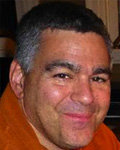
David C. Plaut is Professor of Psychology at Carnegie Mellon University, with a joint appointment in the Center for the Neural Basis of Cognition. He is an internationally recognized expert in applying computational/neural-network modeling to understand normal and impaired cognitive processes, particularly in the domains of reading, language, and semantics. He received a FIRST award from NIH in 1997, a Fulbright Scholarship in 2000 and a Troland Research Award from the National Academy of Sciences in 2003. He has been Associate Editor of the journals Cognitive Neuropsychology and Journal of Memory and Language, has served on numerous Editorial Boards and Grant Review Panels, and has contributed to over 160 scientific publications.
- [3]-5 Yuanchun Shi, ProfessorPresentation slides
-

Yuanchun SHI is a professor of the Department of Computer Science, the director of Institute of Human Computer Interaction & Media Integration of Tsinghua University, and the director of Pervasive Computing Division of Tsinghua National Lab of Information Science and Technology, China. Her research interests include human computer interaction, pervasive computing and multimedia communication. Prof.Shi has publications in IEEE Pervasive Computing, TPDS, TKDE, ACM CHI, MM, UIST, etc. Her website is at http://pi.cs.tsinghua.edu.cn She received her PhD, MS and BS in Computer Science from Tsinghua University. She became a faculty member in Department of Computer Science of Tsinghua University in 1993. She was a senior visiting scholar at MIT AI lab during 2001-2002. She had chaired several conferences like the ACM Ubicomp2011. She serves as the Area Editor of Pervasive and Mobile Computing, Editor of Interacting with Computer.
- [3]-6 Paul Marshall, Dr.Presentation slides
-

Paul Marshall is a lecturer in interaction design at the UCL Interaction Centre. His research interests centre on the design and in-the-wild evaluation of technologies that extend, influence or augment individual human capabilities, including ambient installations to encourage behaviour change, multi-user interactive surfaces to support collaboration and haptic devices to extend perceptual experience. He has a BSc in Psychology from the University of Edinburgh and a DPhil in Human Computer Interaction from the University of Sussex. He worked as a post doc at the Open University and at the University of Warwick before moving to UCL in 2011.
Academia-industry Collaboration on Design
- [4] Kerry O'Connor
-

Kerry O'Connor is a Design Lead and Business Designer in IDEO's Bay Area locations. Kerry's background in Anthropology and Business has resulted in her passion for using design thinking to create solutions that delight not only the businesses that offer them, but also the people who consume them.
Kerry has nearly 15 years experience in strategy, marketing and finance. At IDEO, Kerry's work has focused on the Asian markets. Her work consists of making strategy tangible, whether that is visualizing the emerging digital marketing ecosystem, designing a go-to-market plan for ditto, a new business launched by the Korean home shopping company GS SHOP, or leading a new piloting approach for a retail client that resulted in continuous design enhancements. Kerry's passion is to use business thinking as a generative tool for design.
Kerry comes to IDEO from the Hasso Plattner Institute of Design at Stanford (the d.school), where she was a Design Fellow. There, Kerry taught classes in design thinking to graduate students, coached student teams and led the d.school's executive education business. Today, Kerry continues to teach, lecture and coach emerging design thinkers at Stanford. Prior to the d.school, Kerry worked in Strategy & Marketing for a medical device manufacturer.Kerry also has experience in financial services, having spent nearly four years at an investment bank, working in Equity Research.
Kerry received a B.A. in Anthropology, with Honors, from Boston University, and an MBA from Stanford University.
And while Kerry is proud of her business sensibility, she admits to repeated lapses in judgment while making upgrades to her rented apartment; she is blindly determined to build a cozy and well-designed nest.
Researcher transferable skills development programmes in the UK
- [5]-1 Alison Leggett, Dr.Presentation slides
-

Dr. Alison Leggett accumulated an in-depth knowledge of everyday life as an academic researcher during her PhD at The University of Nottingham and postdoctoral positions at the University of Leicester and the University of Bristol. Alison now applies this insight to managing the Academic Development team and portfolio of development for the academic community at Bristol. Her role involves designing and coordinating a comprehensive range of training and development activities and corporate initiatives, developing information resources and providing advice and guidance on career development for all members of academic staff, including postdoctoral researchers.
Alison's particular passions are improving the working environment, productivity and success of research teams through leadership development and supporting postdoctoral career transitions by optimizing their transferable skills.
Alison is a professional member of the Chartered Institute of Personnel and Development, a qualified Myers Briggs Type Indicator Practitioner, a member of the UK CROS Steering Group and writes regular career development articles for jobs.ac.uk.
- [5]-2 Robin Humphrey, Dr.Presentation slides
-
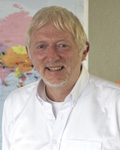
Dr. Robin Humphrey is a Reader, and Director of Postgraduate Research Training, Newcastle University, UK. He started his academic career in research centres at Durham University and in the Medical School at Newcastle University, before becoming a lecturer in social science research methods at Newcastle. When doctoral research training expanded in the 1990s, he left undergraduate teaching and started to develop and direct a wide-ranging, Postgraduate Research Training Programme in the social sciences and humanities, which now incorporates researcher development into interdisciplinary research training modules and workshops. He has published widely on doctoral pedagogy and policy, and was a key participant in the European University's Doctoral Programmes Project, which framed work on the third ‘Doctoral' cycle of the Bolonga process in Europe. In 2011, he was awarded a National Teaching Fellowship by the UK Higher Education Academy for his contribution to interdisciplinary doctoral research training.
- [5]-3 Jane Nolan, MBEPresentation slides
-

Jane Nolan MBE teaches enterprise and entrepreneurship, facilitates enterprise workshops in Newcastle University's Post Graduate Researcher Development programme and supports the work of the Entrepreneurial Development Unit within Newcastle University Careers Service. She has also worked as a facilitator on the Cambridge Judge Business School Enterprisers programme and Newcastle University's ACTION2011, 2012 and 2013 enterprise competitions for post graduate and post doctoral researchers. She is a part time lecturer with Newcastle University Business School and has won a University Teaching and Learning Committee innovation award. Jane is a doctoral candidate in the School of English Literature, Language and Linguistics at Newcastle University (part time) researching enterprise and employability. She has an MBA from the Open University and is a Fellow of the European Enterprise Educators (3EP) Programme.
In her teaching, facilitation and consultancy work, Jane draws on 39 years experience in business. She sold her extremely successful, award winning company in 2007. She was awarded the MBE for services to UK exports in the New Year's Honours List December 2000. In 2006 she won the UKTI Individual Achievement in Export award and was the 2006 North East Woman Rural Entrepreneur of the Year.

-
- March 19, 2013
- Presentation slides have been published.
- March 19, 2013
- Our symposium has closed.
- March 6, 2013
- Program has been updated.
- March 1, 2013
- Please register immediately!
- February 28, 2013
- Program has been updated.
- February 18, 2013
- Site has been opened IDS Kyoto 2013.







